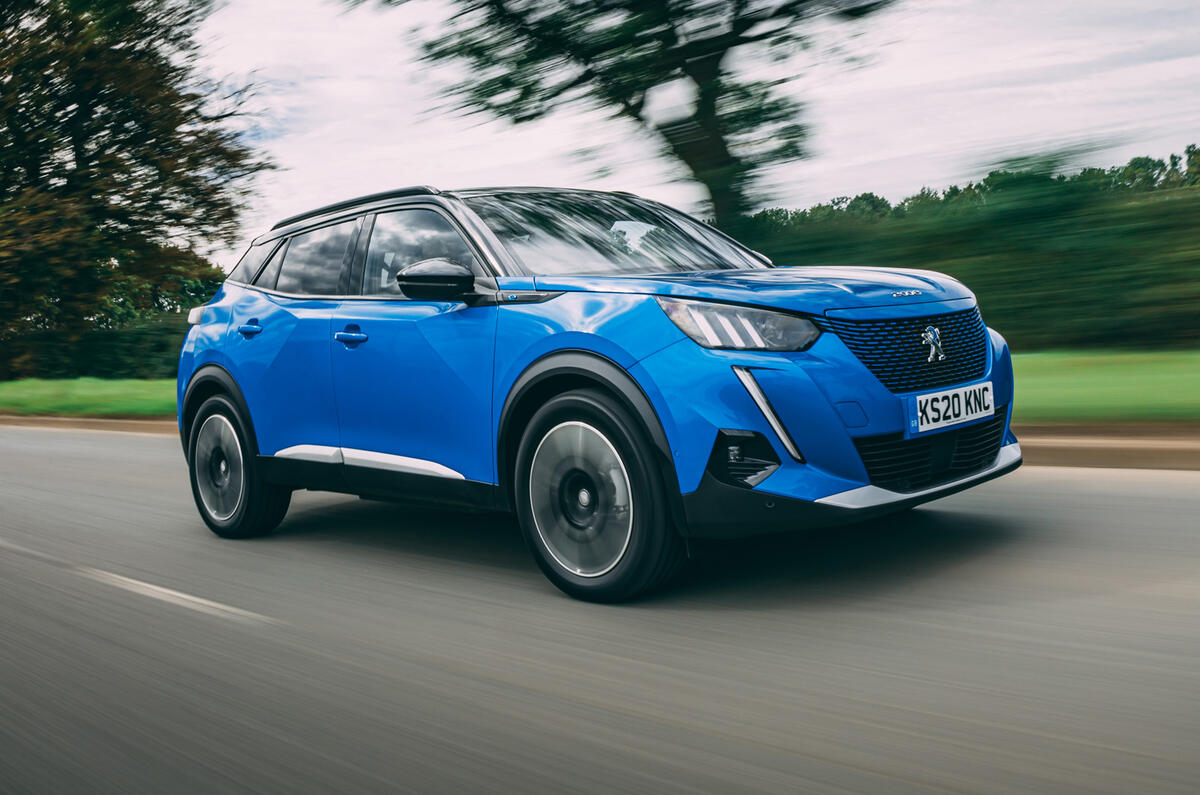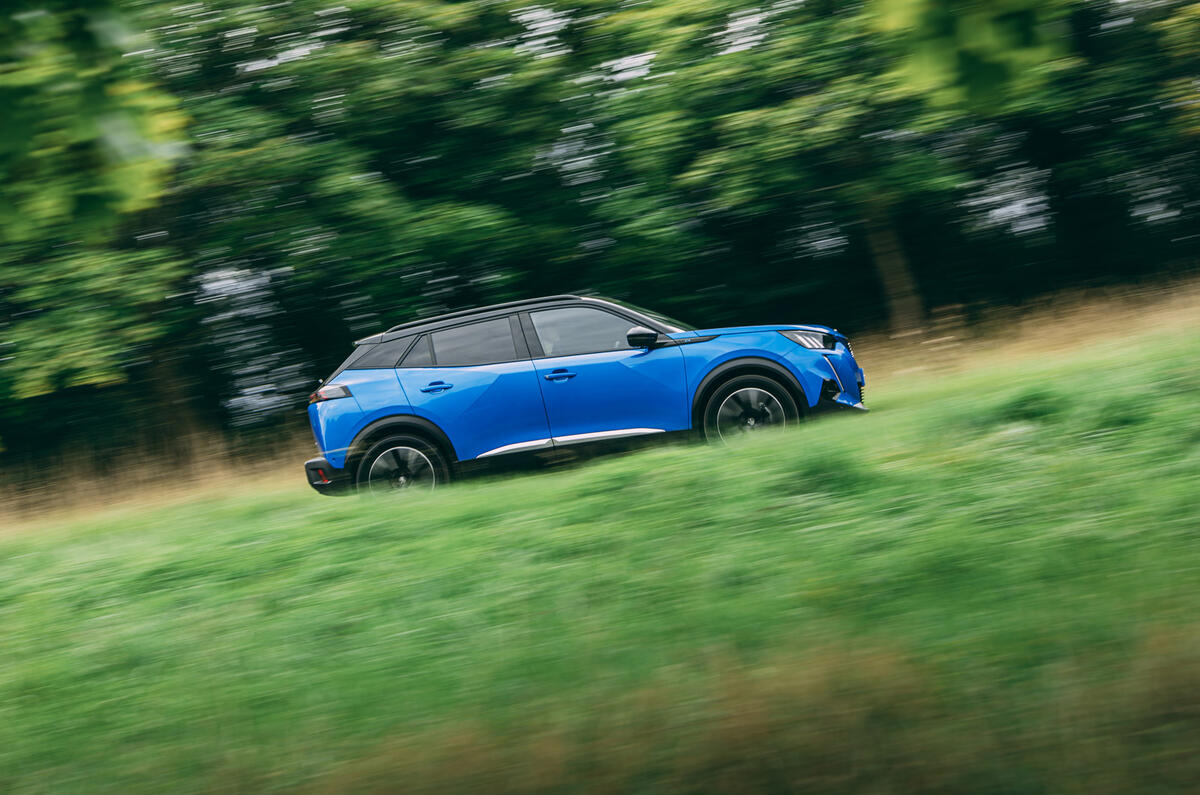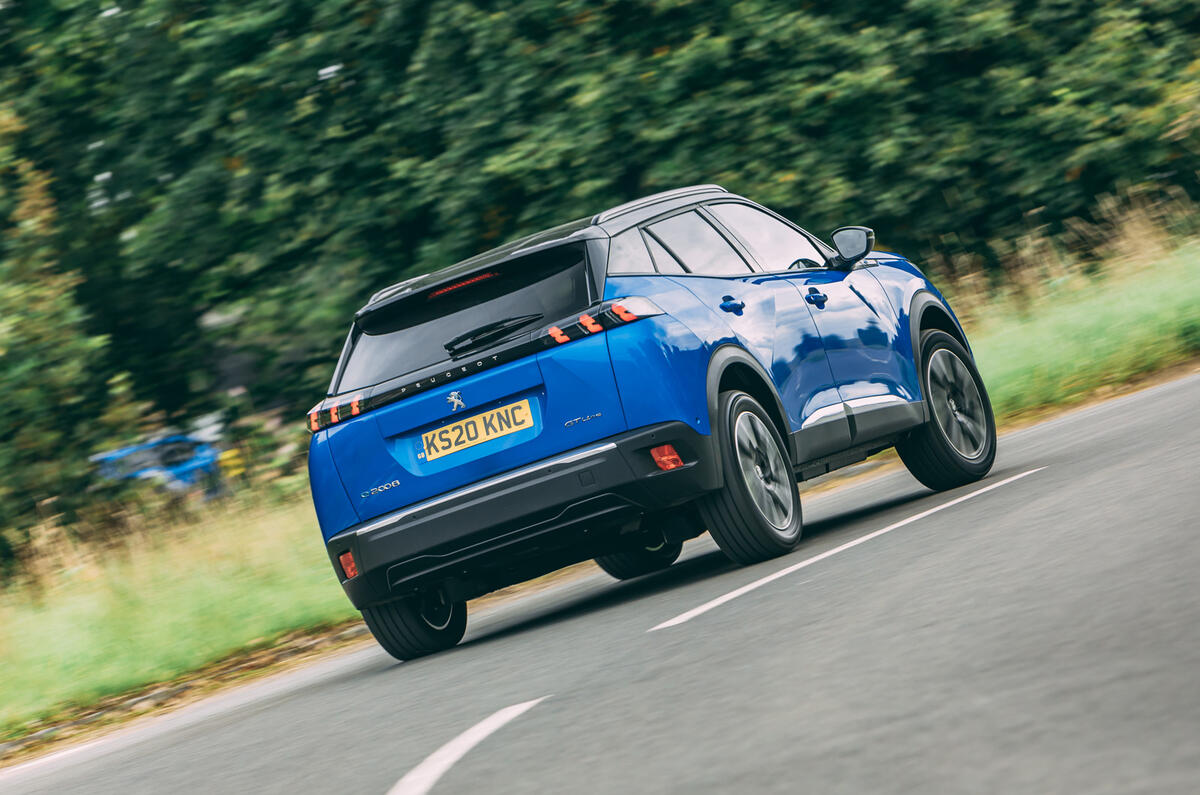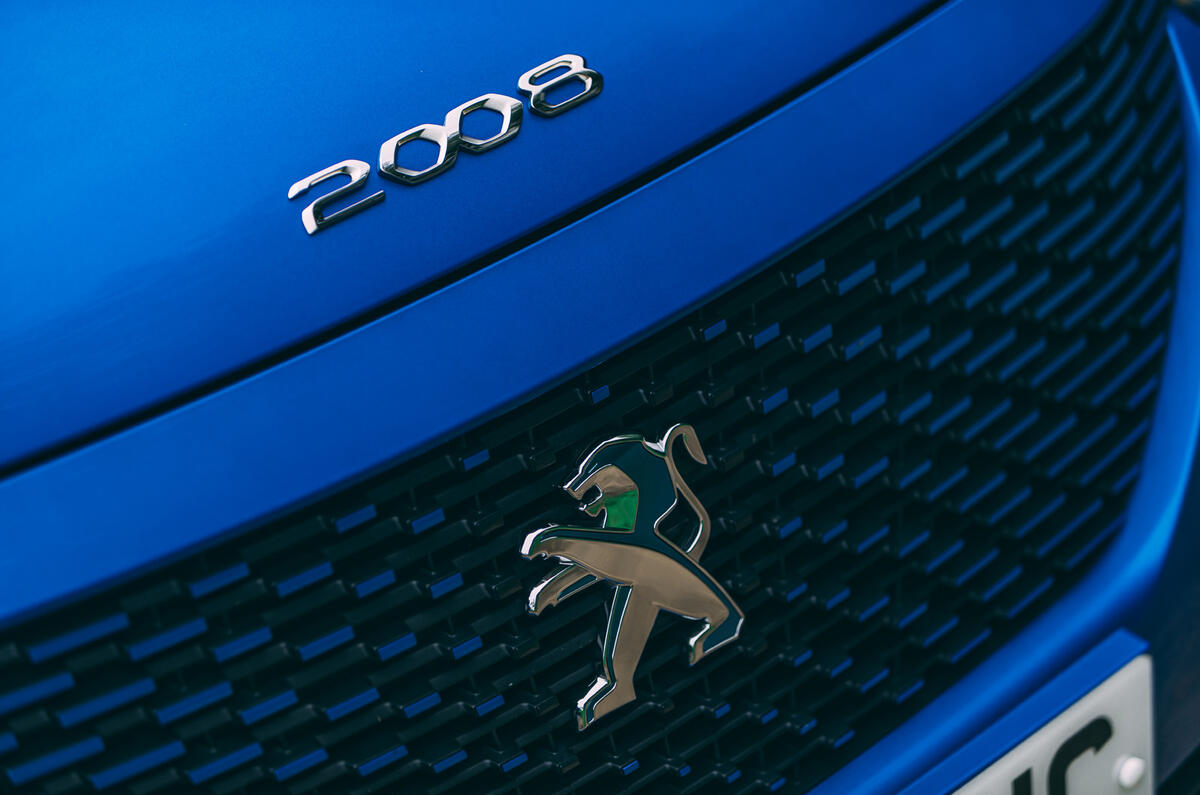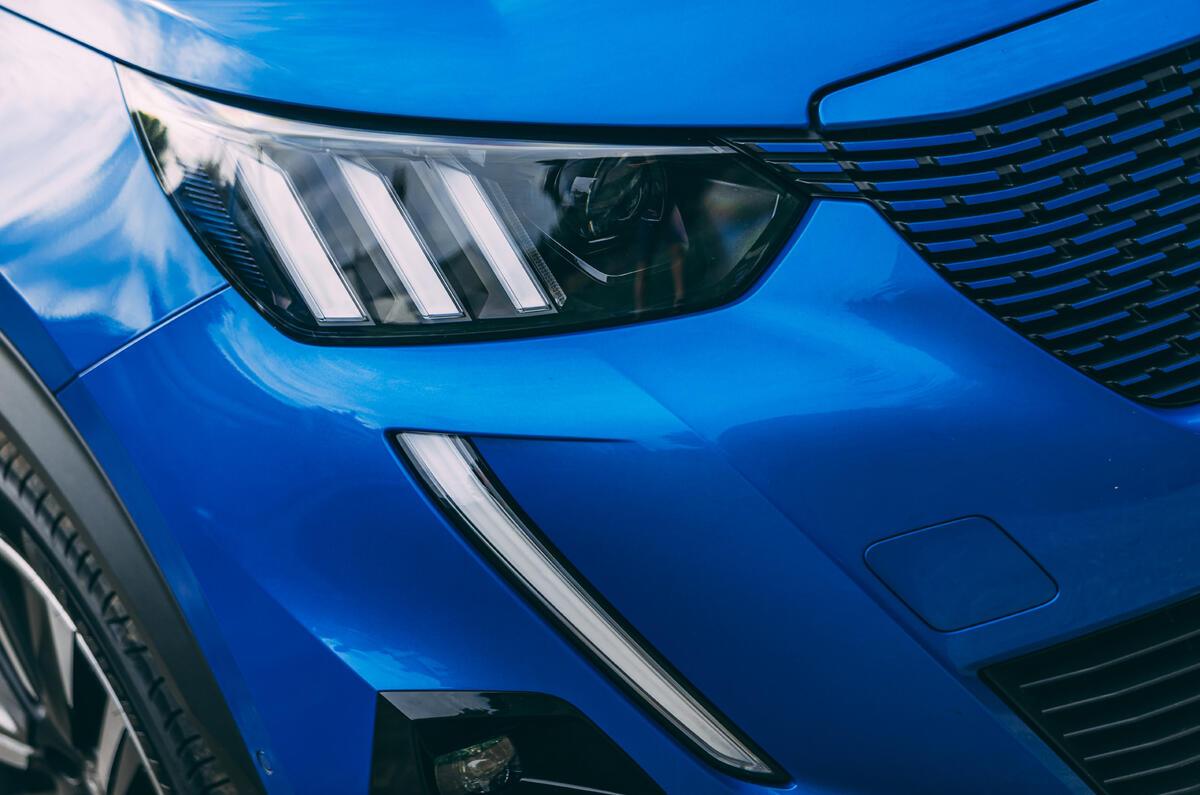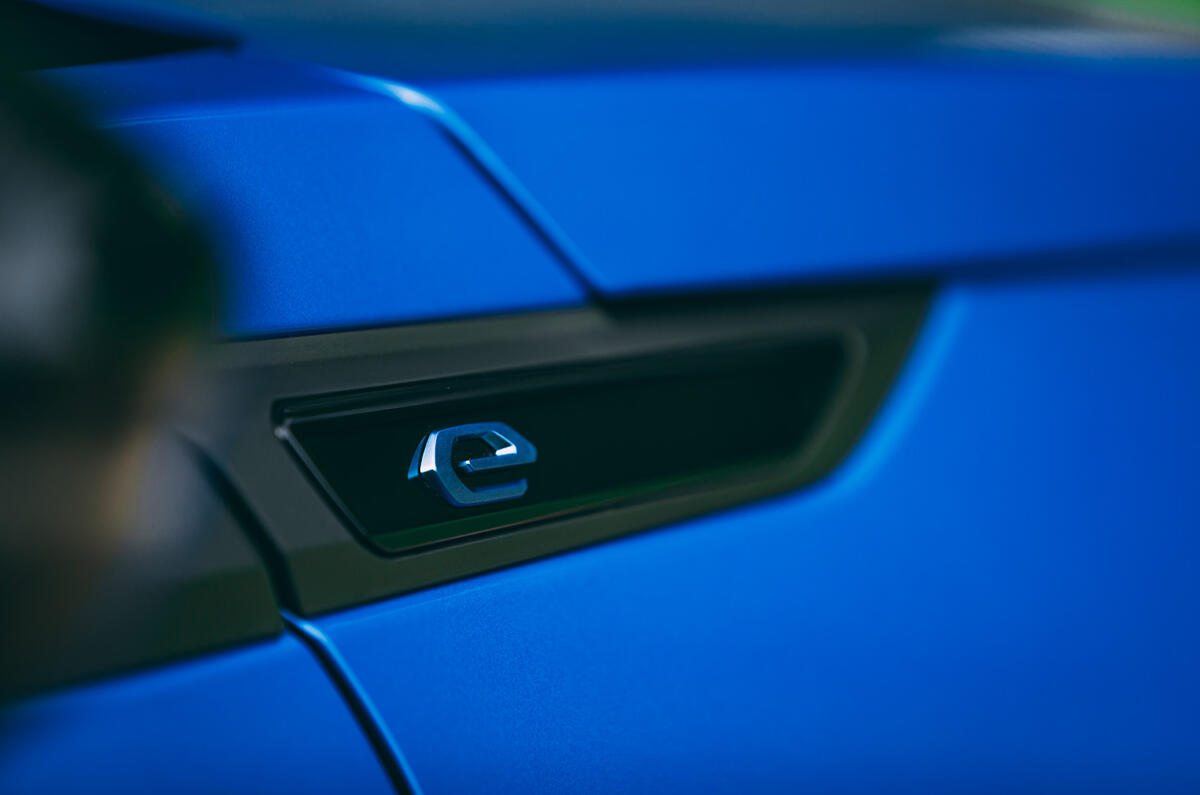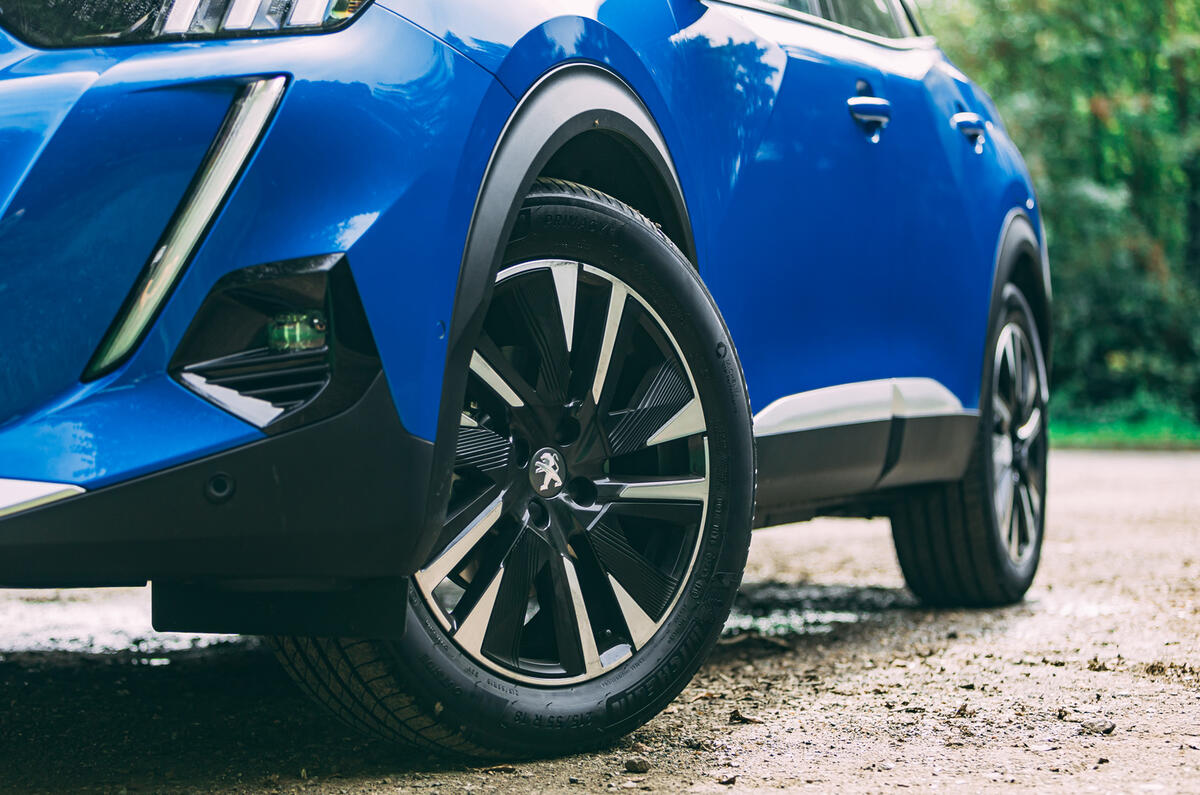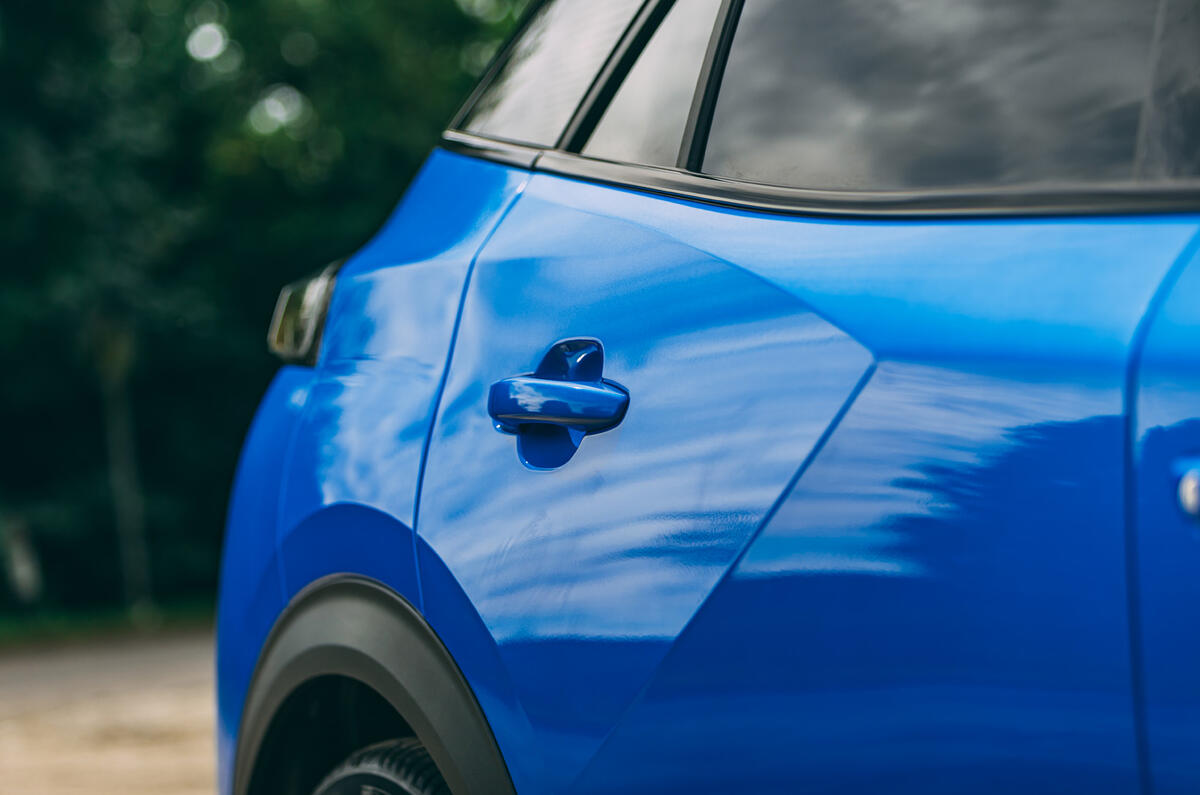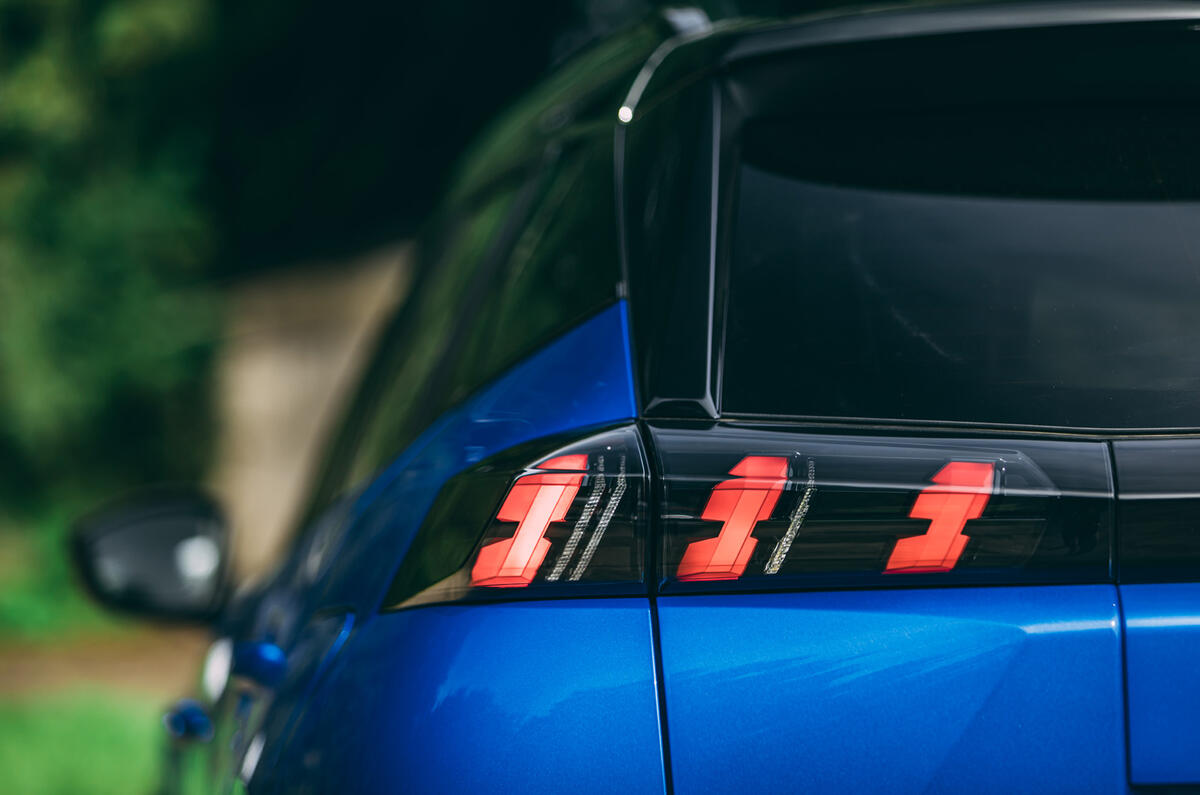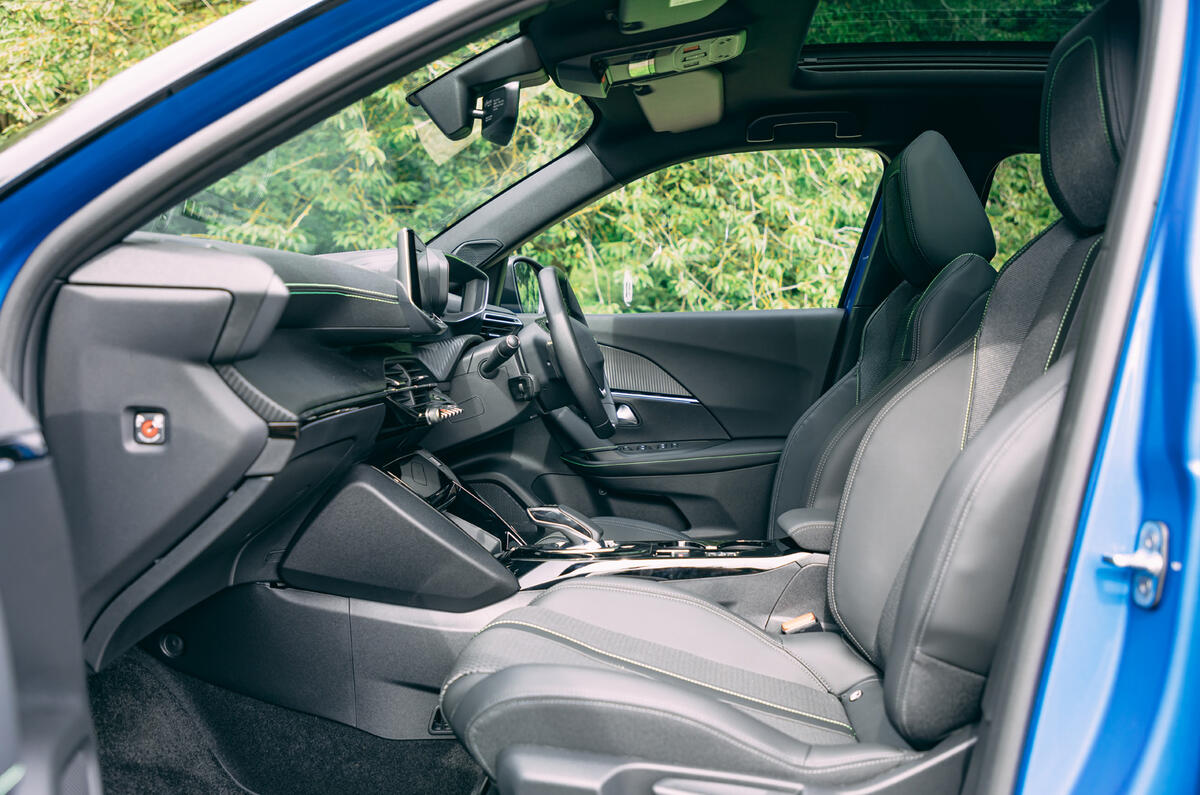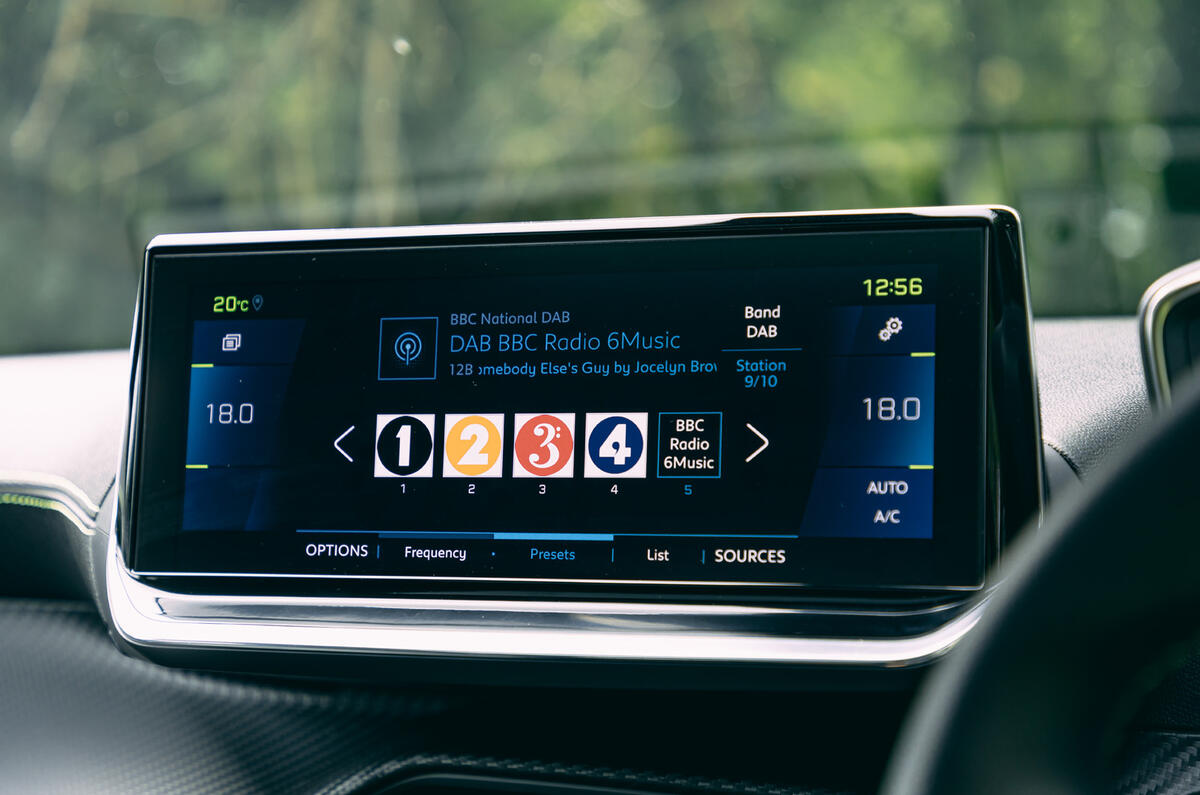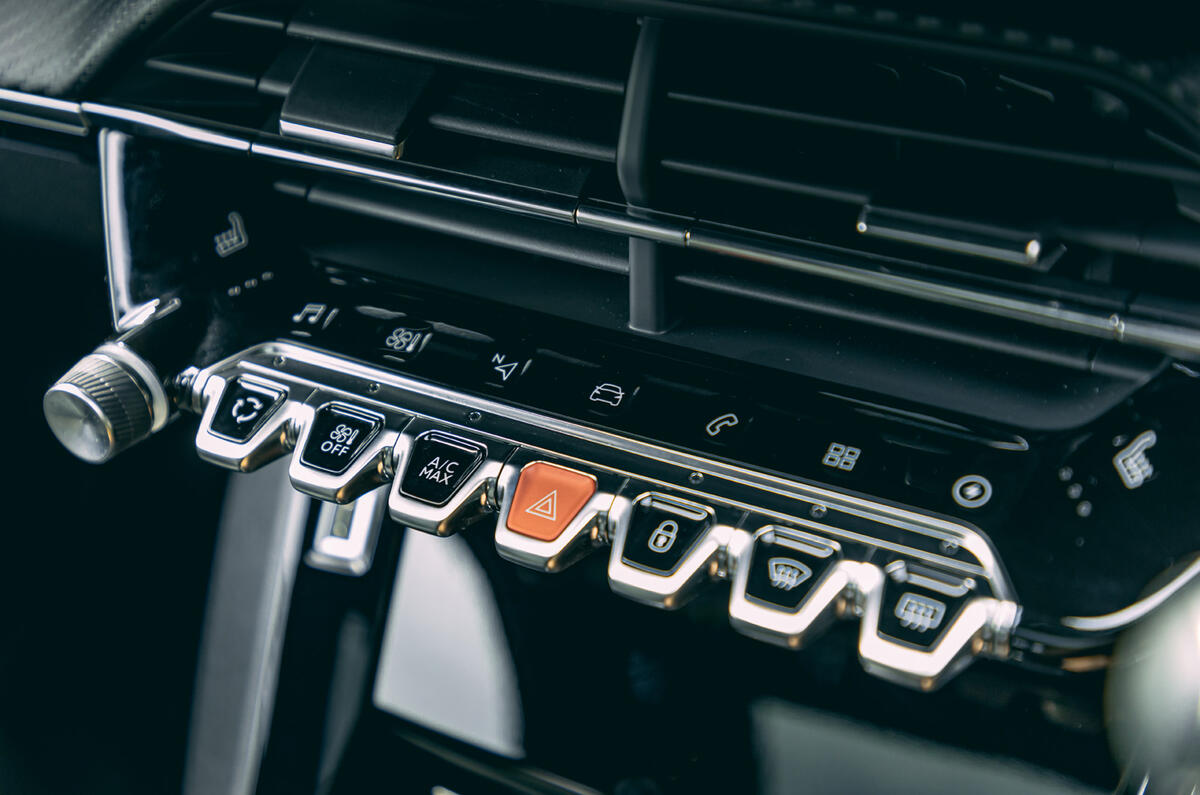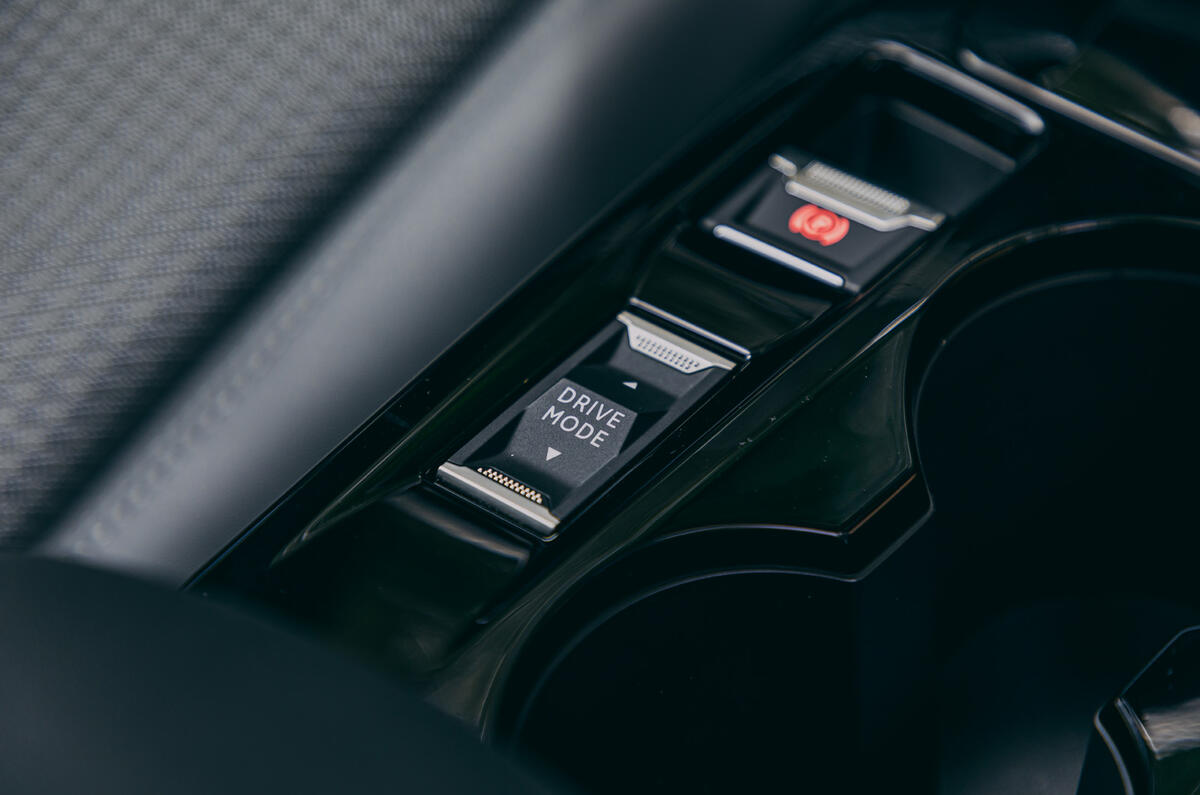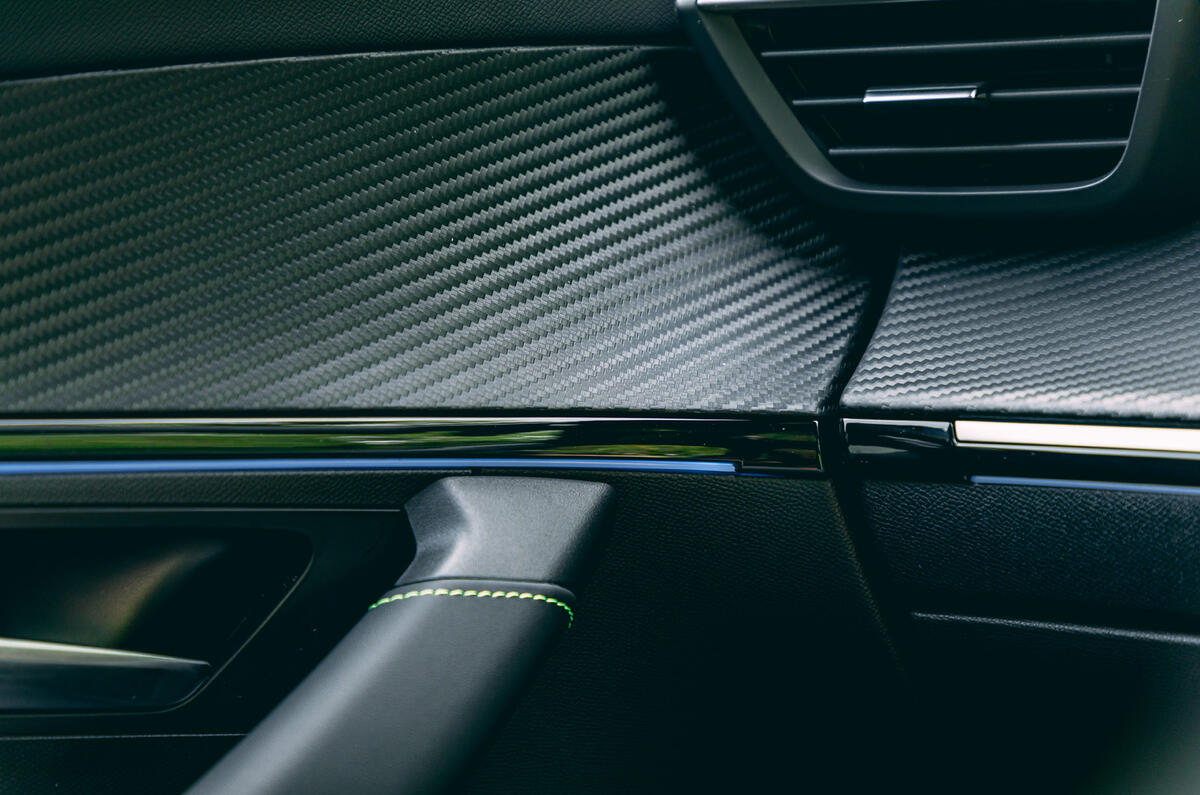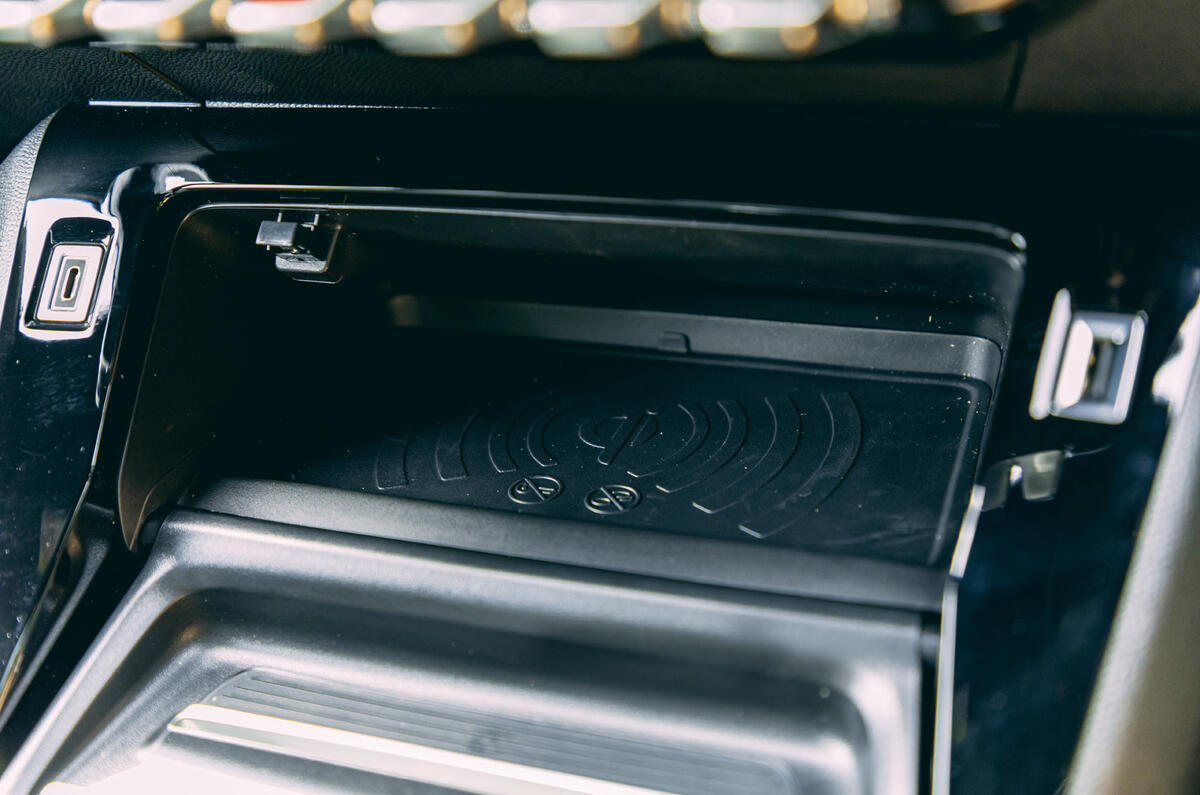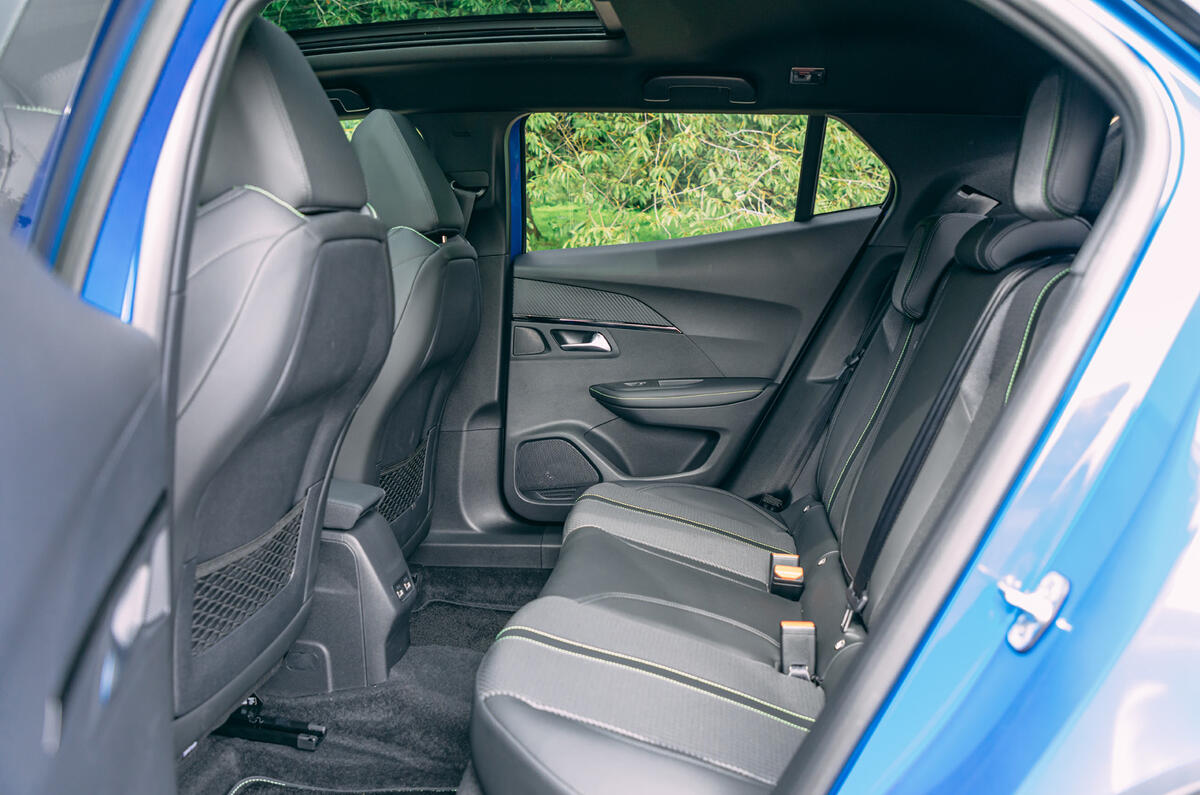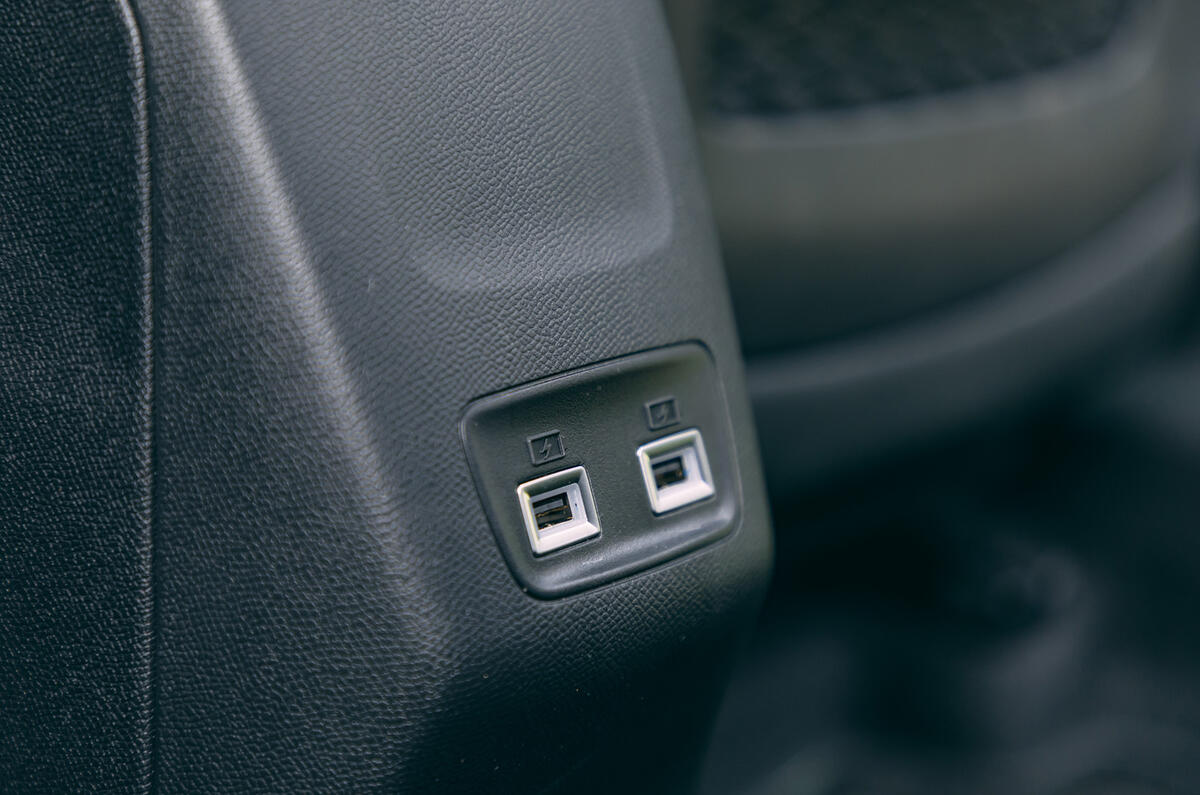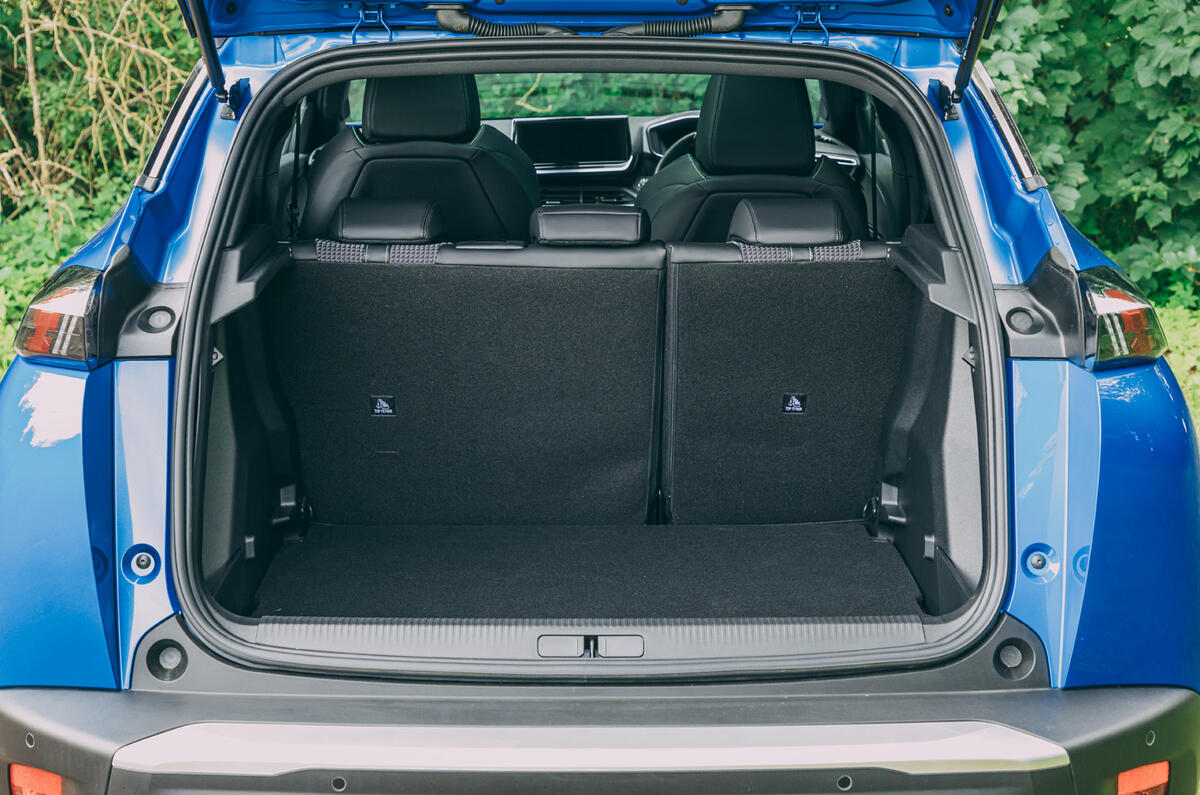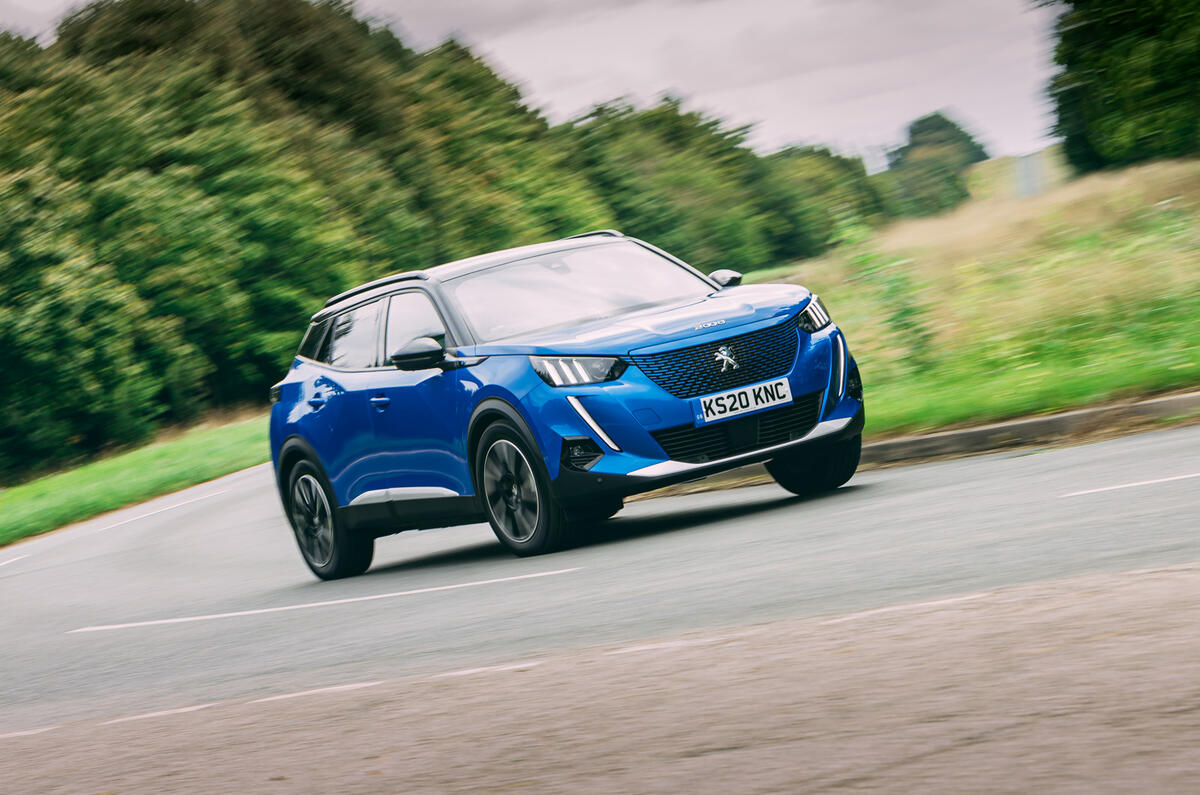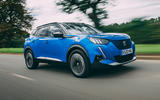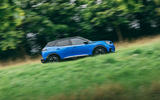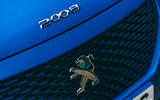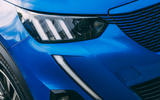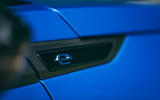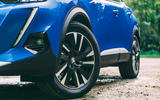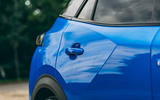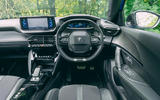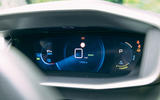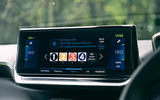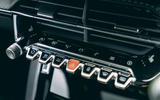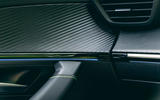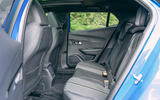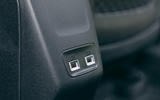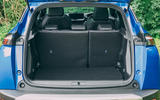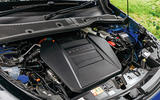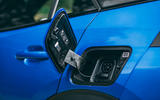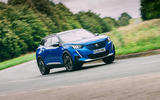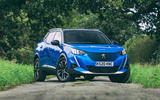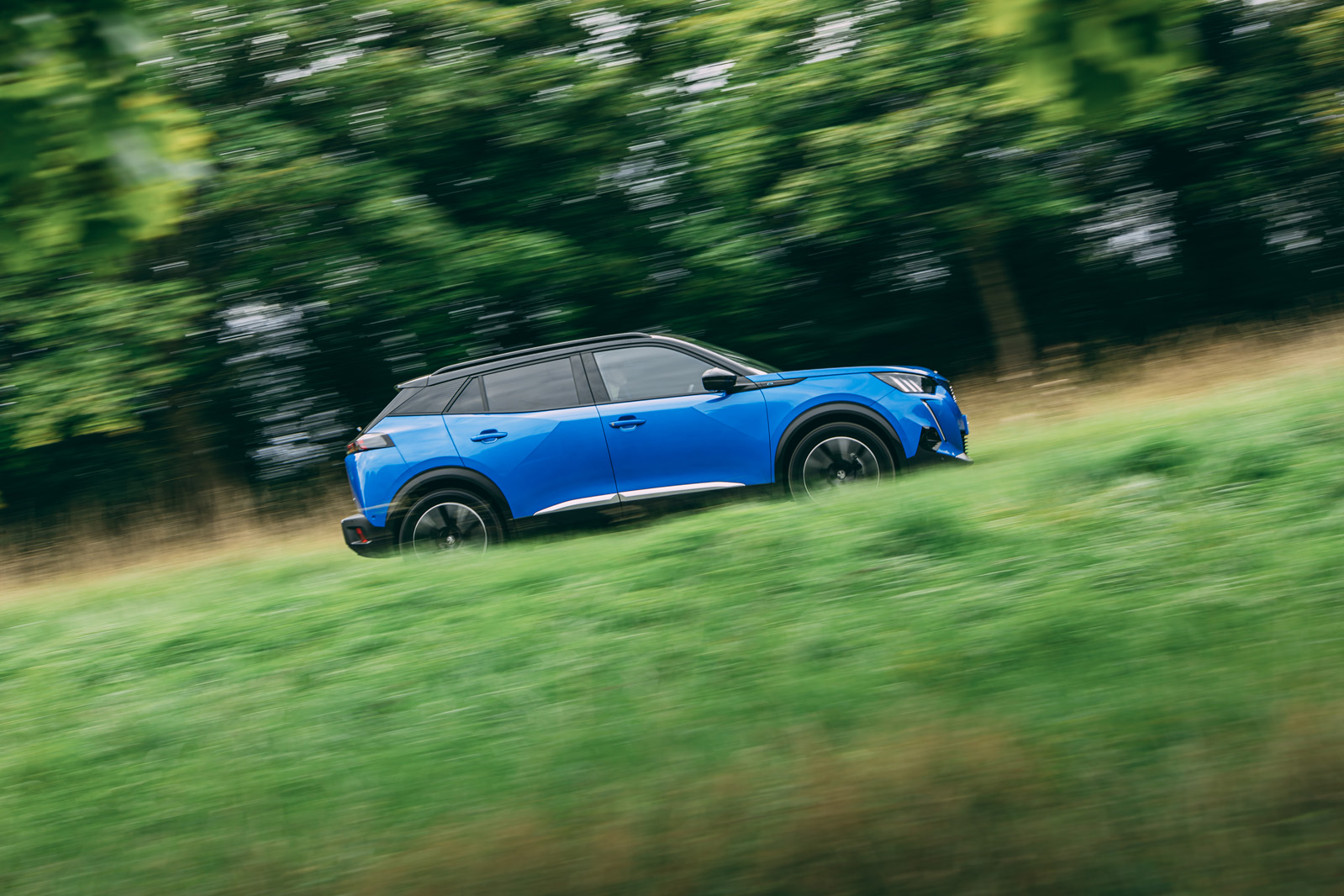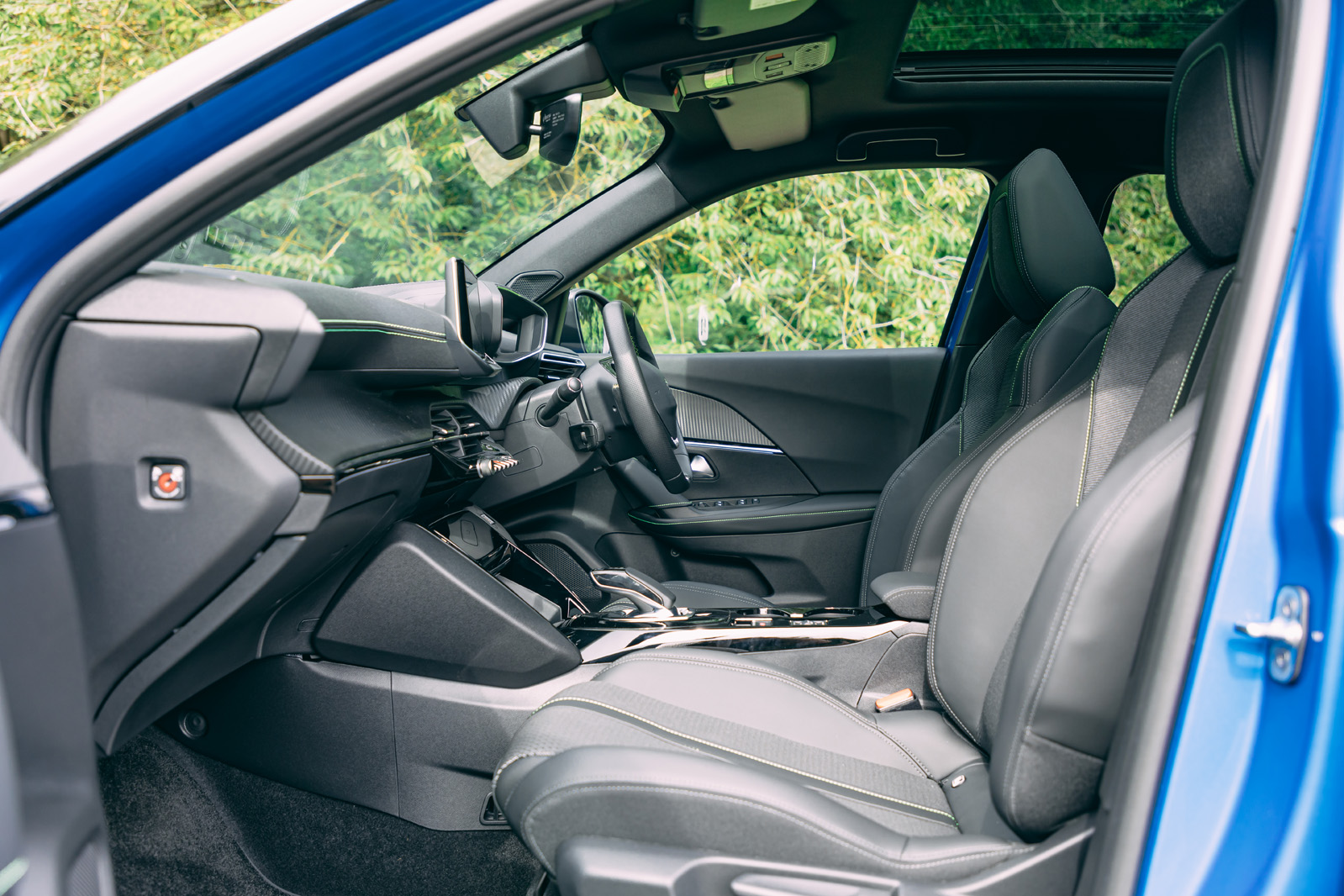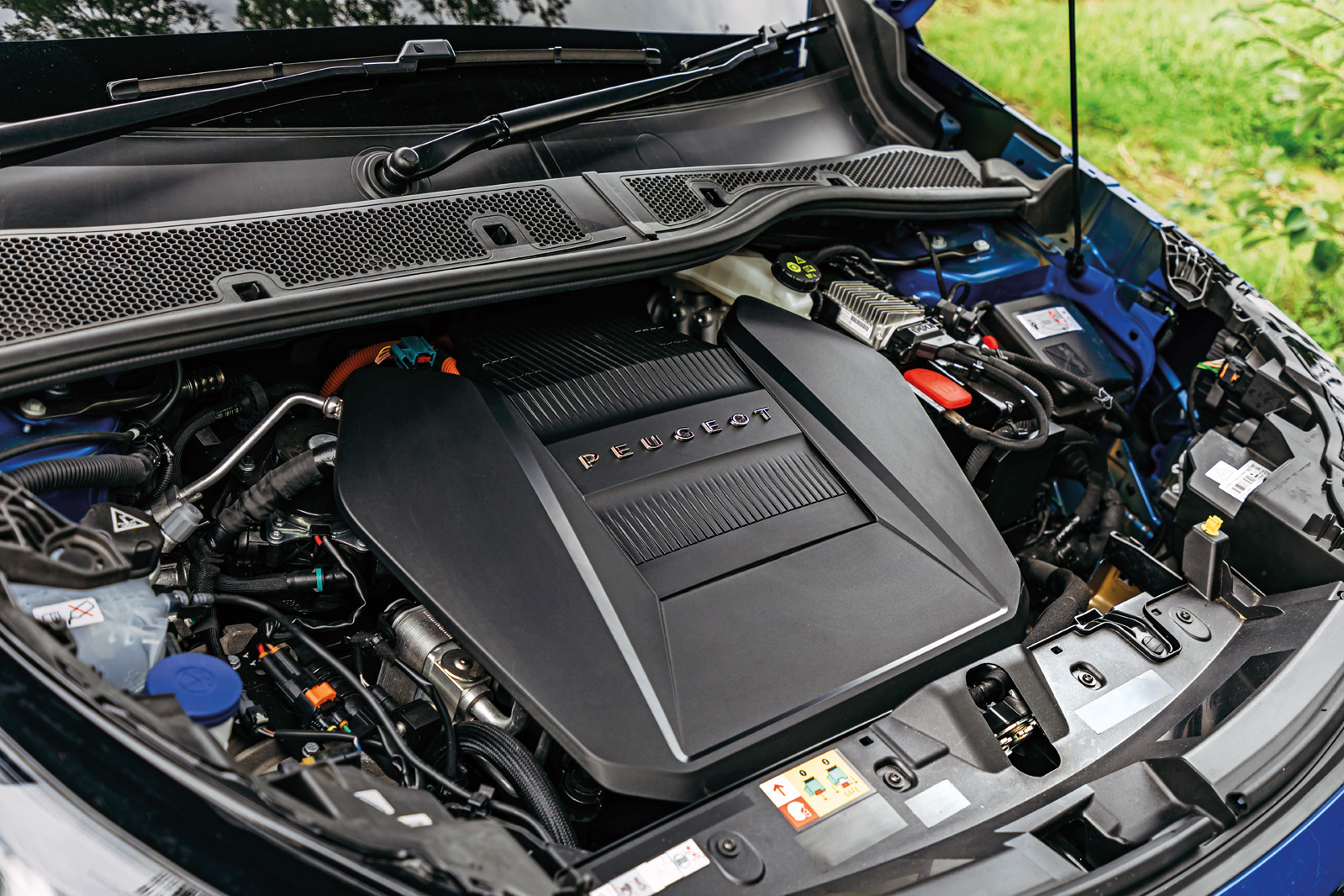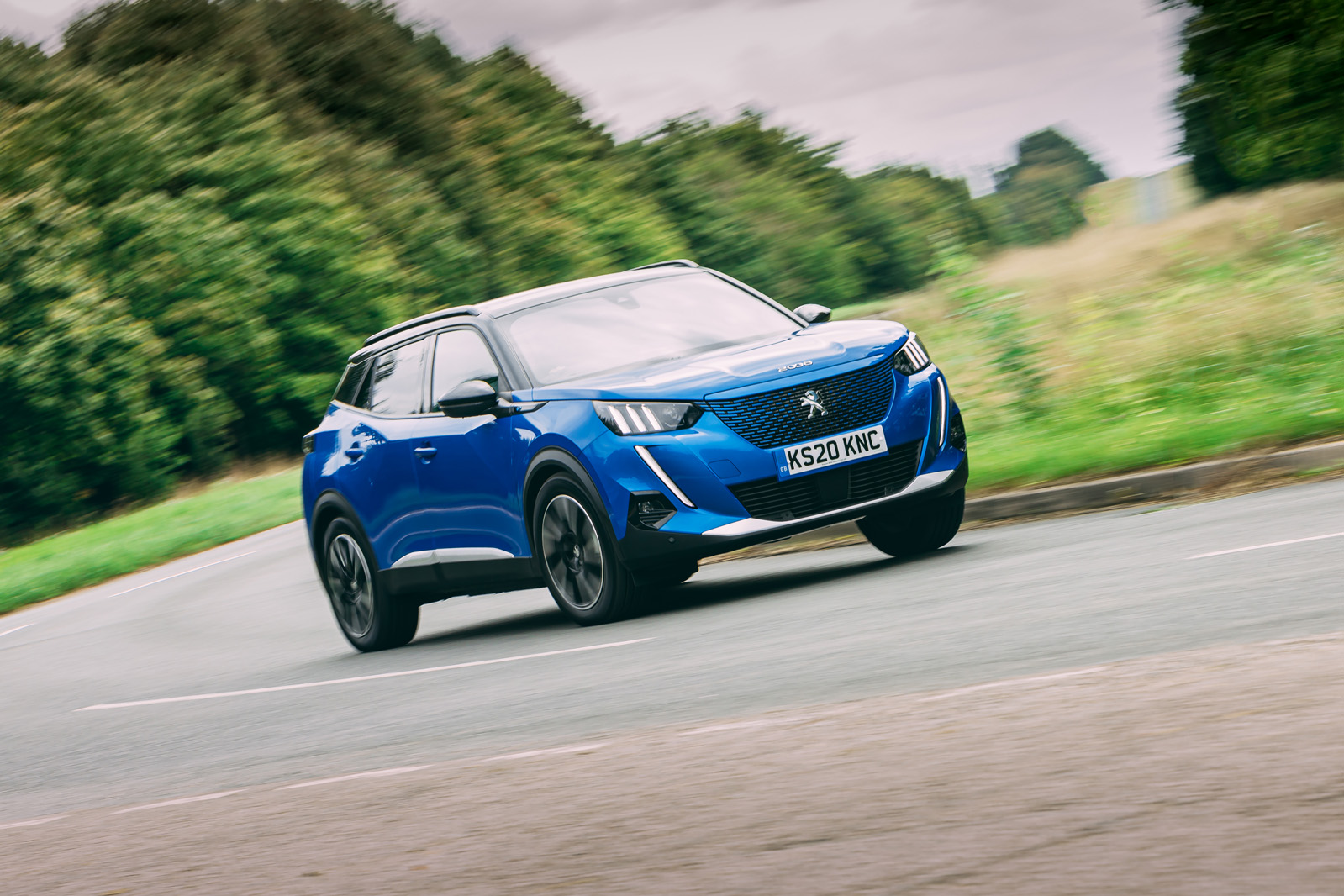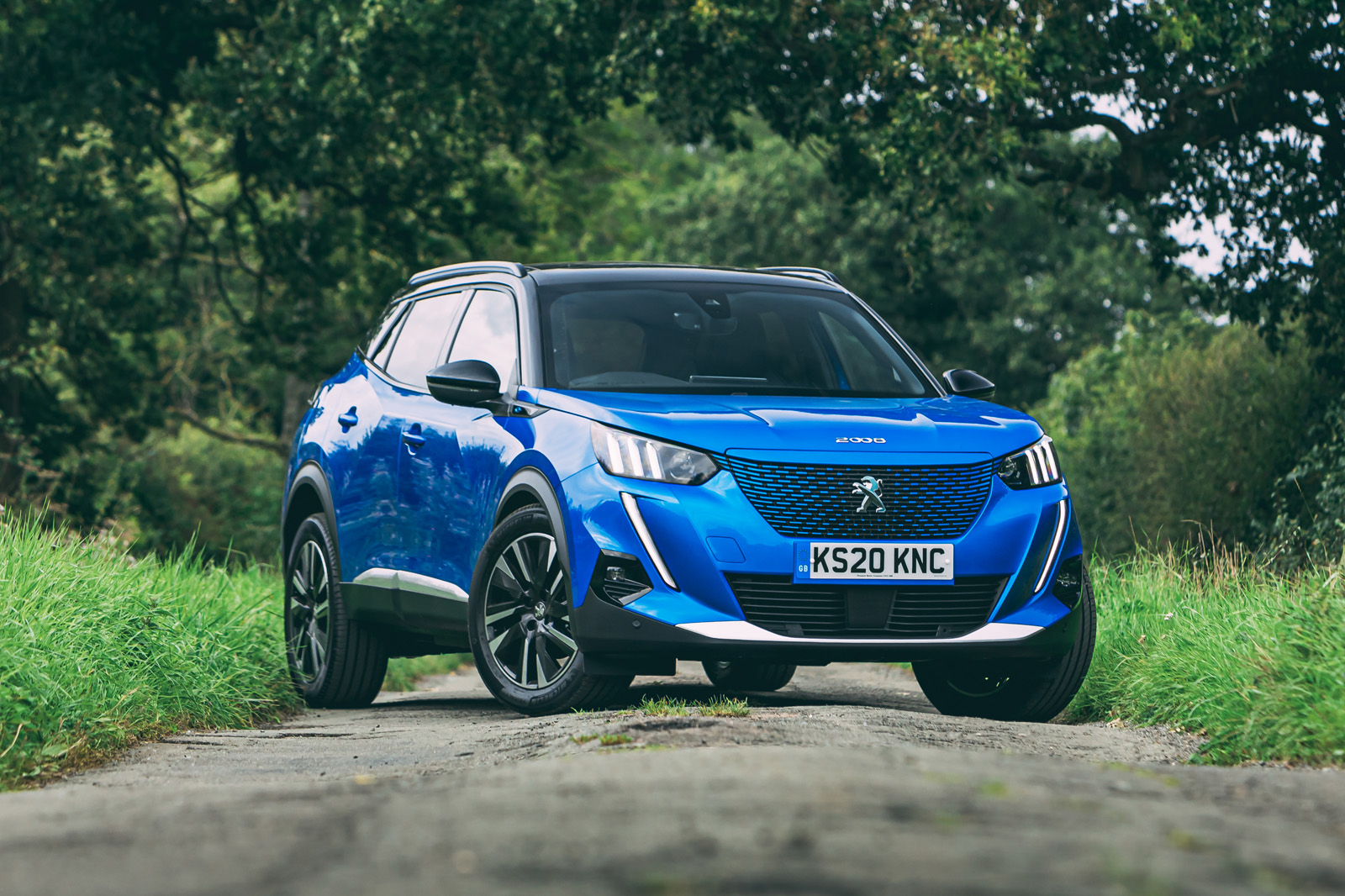The Peugeot e-2008’s driver’s seat doesn’t seem particularly highly set. Once you’re in, assuming you like a fairly low cushion height (our test car had manual adjustment), you won’t find the driving position very upright or bent-legged, and nor will you find a particularly lofty vantage point. This might be a disappointment for some, of course.
Meanwhile, the same slightly obstructive oversized cabin sills we found when we tested the DS 3 Crossback feature again here. You have to remember to lift your feet over them as you board, but it’s only a minor annoyance.
Our test car had Peugeot’s Cielo opening sunroof fitted (optional on all but the range-topping GT model), which robs some front-row head room. If you have it as a taller driver, it’s unlikely that you’ll be able to use the full range of seat base height adjustment.
Whether you have it or avoid it, however, second-row head room will be unchanged. It’s just about respectable for adults travelling back there, although leg room is tighter than taller people might like. Kids in booster seats can be accommodated just fine, although only by removing the rear head restraints, which is a slightly fiddly job.
Your first impression is of an interior with a bit of lavish material flourish and flair. The GT Line trim of our test car added tri-material part-leather seats and lime-green contrasting stitching, which were welcome enriching ambient influences. But we could have tested a cheaper derivative and still had a car with leather-faced controls, Peugeot’s 10.0in touchscreen infotainment system and its 3D digital instrument display. Whatever trim level they opt for, then, e-2008 owners are likely to consider perceived quality and on-board technology selling points for the car, and quite justifiably so.
The car’s control layout remains contentious. The i-Cockpit credo forces you to position the steering wheel low, as if sprouting from between your knees, leaving room for you to view the instruments over the top of the rim. The good news is that the 2008’s layout seems to accommodate the philosophy better than other current Peugeots.
The driving position doesn’t feel strange or unnatural for long, then, and by the time you’re used to those holographic instruments (which some testers found distracting but others quite liked, and of which the layout can be adjusted to taste), it’s likely you’ll have acclimatised.
Peugeot e-2008 infotainment and sat-nav
Every e-2008 gets a touchscreen infotainment system with smartphone mirroring, but Peugeot only lavishes factory-fit sat-nav at Active Premium trim level. You need Allure Premium trim to get the fully furnished 10.0in touchscreen set-up, while Peugeot’s Focal premium sound system is available only on top-of-the-line cars at an additional cost of £590.
Our test car had the 10.0in touchscreen and standard stereo. Despite this larger screen and prime placement on top of the dashboard, the infotainment system still isn’t the most intuitive. There’s a line of capacitive shortcut keys a few inches below, plus a second line of actual buttons, but it’s odd to have to hop back and forth between the screen and the console when flipping menus, while too many functions that should be one-touch operations – such as changing the HVAC mode or muting the sat-nav – need three and four prods to accomplish. It’s a good-looking system but not the easiest to get on with.


